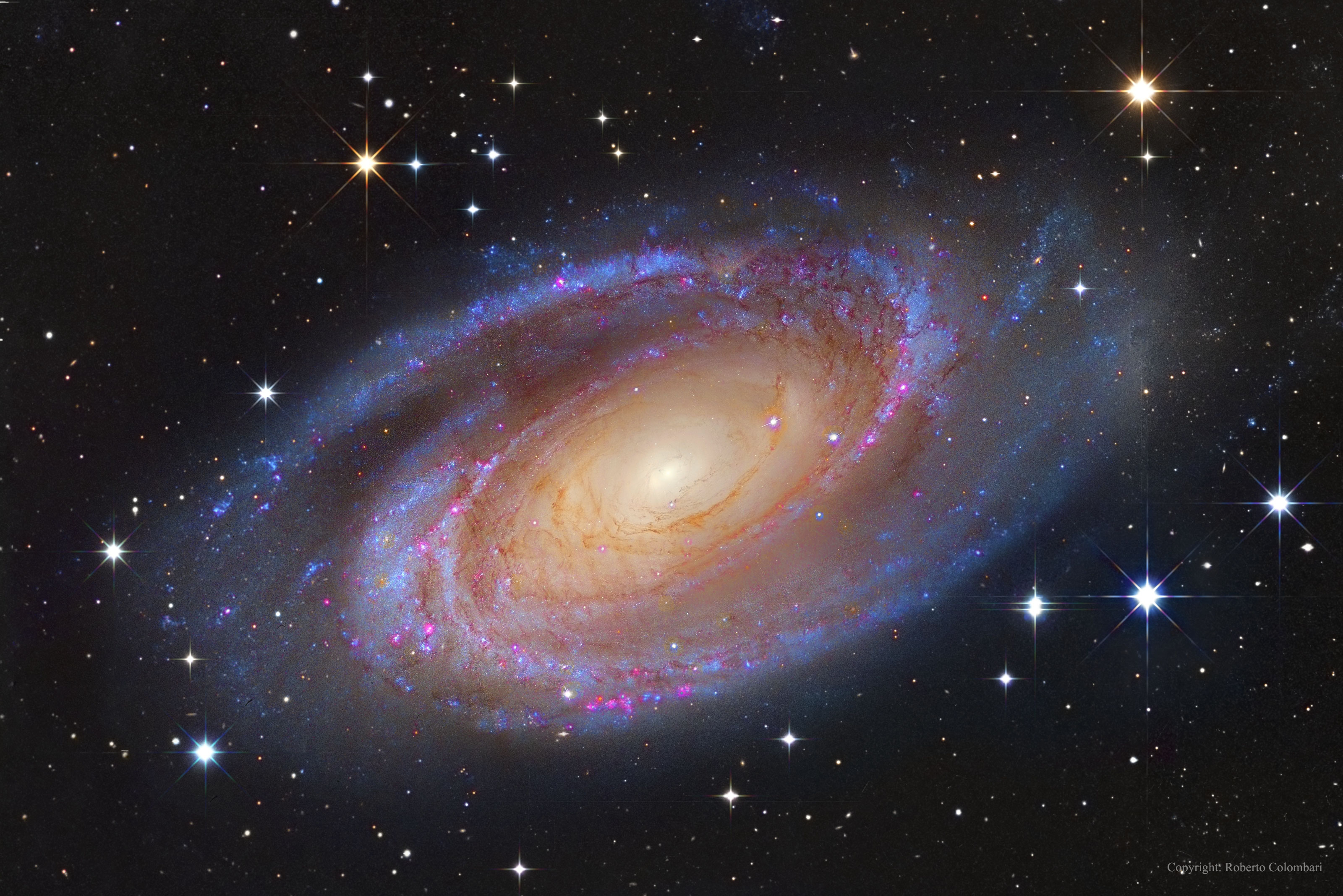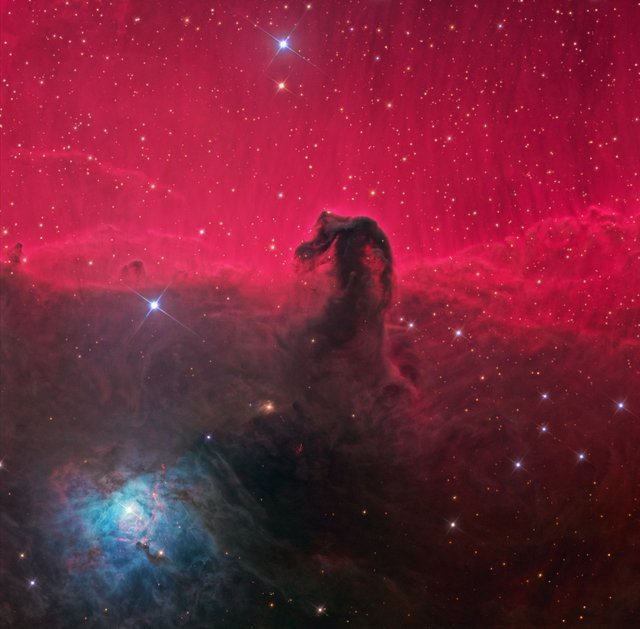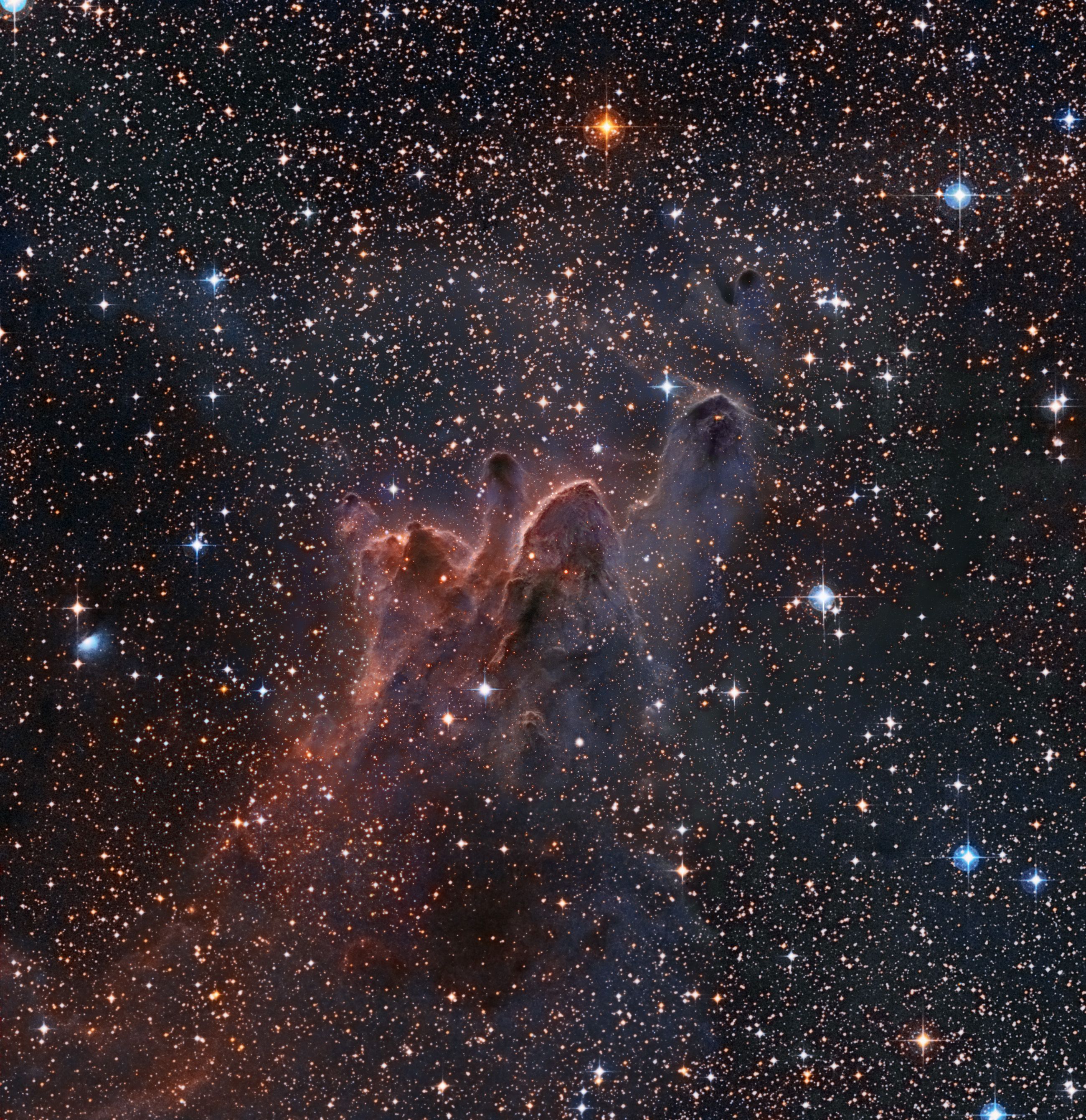We are made of the dust of stars. Part I: A star is born.
Hello Steemit, this time, I want to share with you an interesting article about the birth of a star, its evolution and because we are literally made of star dust. I hope you like it.
Somewhere in our galaxy, a place far away thousands of light-years away, a vast cloud of interstellar gas and dust drifts silently across the near perfect vacuum. The wispy edges of the cloud stretch outward into the blackness for trillions of miles in all directions, as if to reach for the stars beyond.
Like many other scattered clouds in our galaxy, this interstellar emergence contains an enormous amount of matter. Composed mostly of hydrogen and helium, the cloud contains enough mass to create dozens and dozens of stars like our sun. But no stars will shine here. The process of starbirth has yet to occur.
In spite of its enormous mass, the cloud has such vast dimensions, that the atoms are spread thin across the cloud´s colossal volume. Indeed, If you journeyed even to the very center of this cloud, you might first thing that you were still in the near perfect vacuum of interstellar space. But with careful examination, you would find roughly ten atoms per cubic centimeter (a cubic centimeter is about the size of a cube of sugar). In sharp contrast, the air we breathe here on the earth contains 30 billion billion atoms per cubic centimeter.
And it's cold! At only 100 degrees above absolute zero (-173 °C = -280 °F), the atoms of the cloud hardly collide between them. This is the essence of a stellar womb, a quiet place in our galaxy that will soon be ablaze with newborn stars, but for now the cloud waits patiently, as it has for millions of year, for the approach of a spiral arm.
We live in a spiral galaxy (Figure 1), a huge rotating collection of gas, dust and hundreds of billions of stars. To look at our galaxy you would have to travel far our into space, far beyond the most remote stars you can see in the sky, and after journeying hundreds of thousands of light years, you could turn and look back to see our celestial whirlpool stretched out before you.

There are countless millions of spiral galaxies scattered across the depths of space. Viewed from afar, our galaxy would surely look quite similar to the galaxy called M81. A typical spiral galaxy like ours own measures 100,000 light years in diameter. Our star, the sun, is located two thirds of the way from the center to the edge, between two arching spiral arms. These spiral arms rotate majestically about the galaxy's nucleus, carrying shock waves that compress the interstellar material. This compression generates the birth of the stars.
As a spiral arm sweeps through an interstellar cloud, the widely spaced atoms are suddenly jostled close together. The cloud has been transparent, but now with the atoms closer together, feeble starlight can no longer penetrate. Our interstellar cloud has become the dark nebula (Figure 2). Dark nebula are hard to find. They show up bets when silhouetted against a background field of stars. An exact example is the one shown in the horse's head nebula.

Since the dark nebula is opaque, light from distant stars no longer penetrate the compressed cloud to warm its gases. The temperature plunges toward absolute zero. As the temperature falls the atoms move more slowly than ever, so slowly that the weak force of gravity between individual atoms now begins to dominate the nebula´s internal structure. As you might well expect, the dark nebula is not perfectly smooth and uniform. Hopefully there is a zone of the nebula a percentage of some of its atoms and there are other points of the same where there are more atoms than average.
All matter has gravity. The more matter there is at a particular place, the stronger is the gravity around that place. Consequently, at the locations inside the dark nebula where, by chance, there is a slight excess of atoms, there is also a slightly stronger gravitational field. These locations of extra gravity easily attract slowly moving nearby atoms. As the number of atoms begins to grow, the gravity at these locations becomes still stronger, thereby attracting even more material from the surrounding nebula. In this way, the nebula begins to break up into lumps or globules (Figure 3).

At its formation, a typical globule may be billion miles in diameter and contain an amount of matter a few times the mass of the sun. (The mass of the sun is about two billion billion billion tons). Numerous globules are seen silhouetted against brighter background of the eagle's nebula. A globule is unstable. Quite simply, the globule is incapable of supporting its own weight. Trillions upon trillions of tons of gas press inward from all sides cause the globule to contract. Under the relentless influence of its own gravity, the globule becomes smaller and smaller, squeezing the gases at the center of the contracting sphere to even higher pressures and densities.
In many circumstances in nature pressure and temperature go hand in hand. Consequently as the pressure of the nucleus of the contracting globule rise, the temperature begins to climb. With an increase in temperature the gases inside the contracted globule begin to emanate. Radiation begins to filter outward through the contracting sphere of gas. You soon notice that the globule is no longer dark. The first light to make its way to your eyes is a dull red, and the gases would glow faintly like coals in a fireplace. The globule has transformed itself into a proto-star. But the proto-star is also unstable against gravity. This sphere of gas is still unstable to support its immense weight. The proto-star, however, continues to contract, pushing the temperatures and pressures to the interior gases higher and higher.
Finally, when the temperature at the protostar´s center reaches the 10 million degrees, the hydrogen burning, is ignited. At this temperature, the nuclei of the hydrogen atoms move rapidly that when they collide they are permanently united. In this remarkable process, the hydrogen is converted into helium. For every 4 hydrogen nuclei that are fused together a new nucleus of helium is created. But even more importantly, the resulting helium nucleus weighs slightly less than the 4 hydrogen nuclei from which it was created. Some matter has disappeared. This lost matter has been converted into pure energy according to Albert Einstein's equation. This process, called thermonuclear reaction, is one of the fastest and most powerful processes occurring in nature, is the direct transformation of mass into energy. The enormous release of energy that accompanies the burning of hydrogen creates the conditions so that the proto-star can finally support the weight of its outer layers. Contraction is halted. A star is born.
If you like, uptvote and resteem. Follow me if you want to read in the second part why we are made of stars dust...